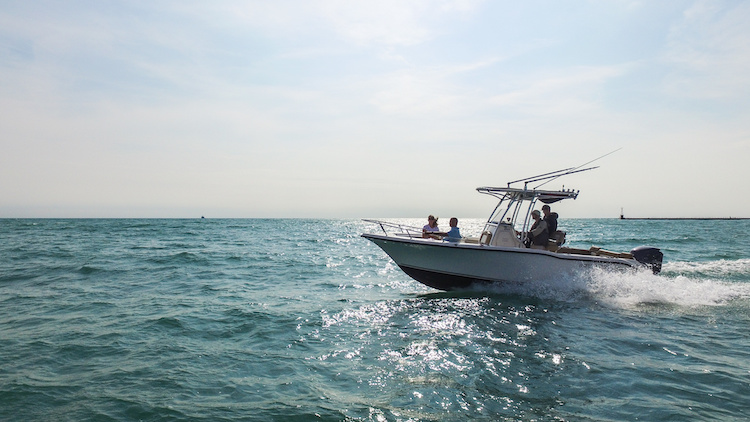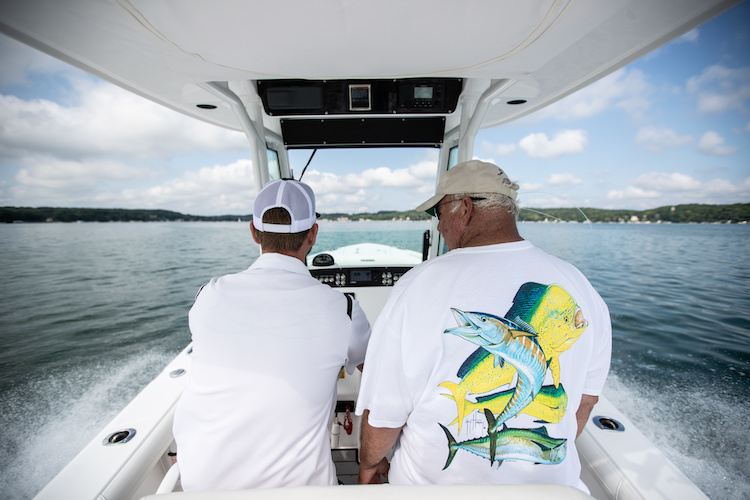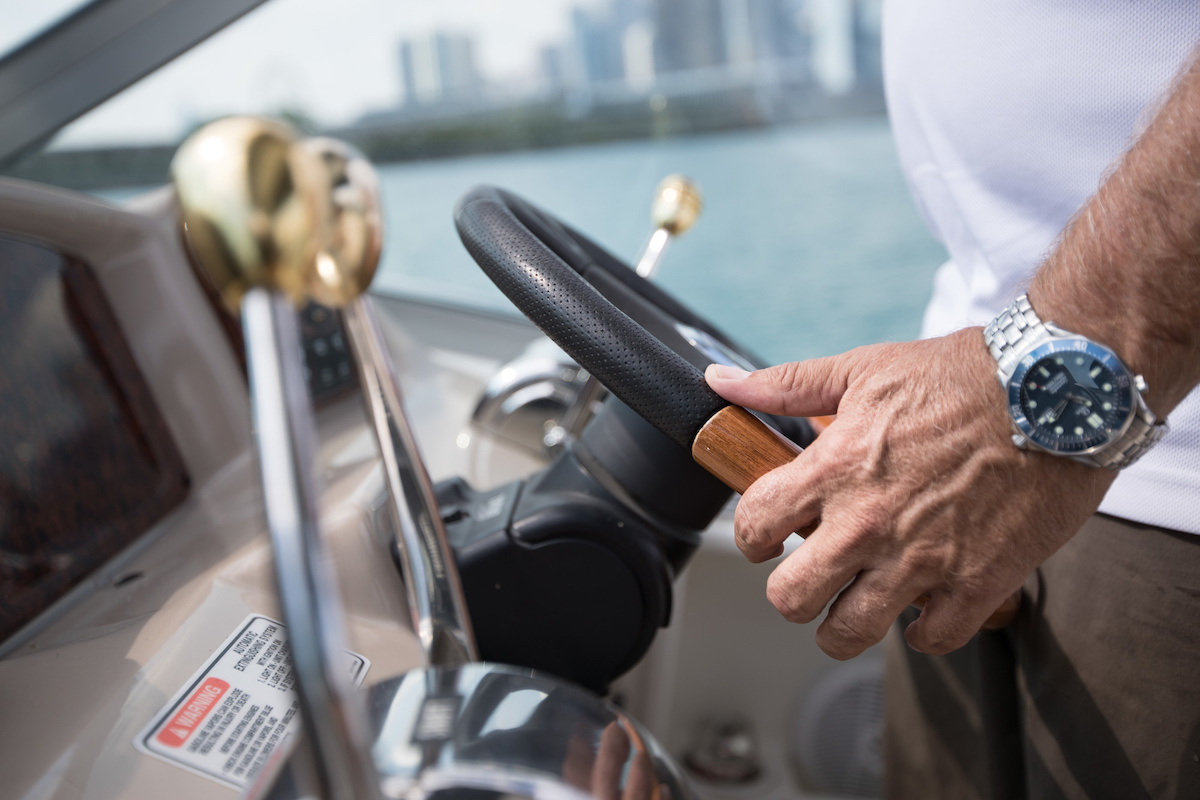Taking a boat for a sea trial—or taking it for "test run"—should be an essential part of the boat-buying process. What to look for during this test, however, isn’t always clear to new boaters. Here are several areas worthy of your attention. For a more thorough evaluation, consider asking a boating-savvy friend to tag along, or for larger boats in particular, hiring a marine surveyor.
Sea Trial Checklist
When it comes performing a sea trial, there are a few main steps you should follow:
- Create a "real-life" environment on the boat to accurately replicate a typical day.
- Be sure to test performance targets, and ask your dealer about horsepower options.
- Play the role of both driver and passenger.
- Look at engine trim, consider how you will use the boat (watersports, fishing, etc.)
- Bring the boat to 30 MPH, perform a hard turn, and if possible, test conditions in rough waters.
- At no-wake speeds, center the wheel and note how well the boat keeps its line.
- Run both into and away from the sun—check for glare and reflections.

What to Look for During a Sea Trial
Whenever possible, test a boat like you plan to use a boat. Many sea trials are undertaken on a boat loaded with little fuel, few passengers, and an absence of gear. In use, however, odds are you’ll have all of the above, adding hundreds or even 1,000 pounds or more to your boat’s load. If practical, bring family members or friends to more accurately replicate your typical day on the water. If not, keep in mind that the performance you feel during a lightly loaded test ride will rarely if ever equate to the performance you’ll feel during real-world usage. If a boat is at all sluggish or just barely hits your performance targets during a test ride, ask your dealer about other horsepower options available and how they may improve the ride.
Likewise, be cautious when selecting a low-horsepower base model designed to hit a specific price point. Again, consider your typical load, as well as how you plan to use your boat. Skiing and wakeboarding? You’ll need a strong low end to pull riders from deep water. Like to fill the boat to capacity and entertain? A lower horsepower engine may struggle to carry the load. Buyers are frequently enticed by a boat’s attractively priced “base” horsepower, only to find themselves later trading up in search of more power.

On the water, play the role of both driver and passenger. As driver, make note of your visibility, particularly in terms of the captain’s forward vision when accelerating onto plane or the ability to easily see over passengers seated in a bow cockpit. Engine trim, transom-mounted trim tabs and even flip-up seat bolsters can be used to improve forward vision but should never compensate for an underpowered craft with an extended time to plane.
Bring the boat to 30 mph, check behind for traffic, then crank a hard-over turn to each side. Ideally, the boat should carve cleanly and powerfully through the turn without the engine struggling to maintain speed or the propeller losing its bite on the water.
Head into rough water (or make your own with a series of S-turns) and cross several wakes at varying speeds. Though the effects of rough water can’t be eliminated, a well-designed hull will carve confidently through wakes while limiting any serious bumps or jarring from disturbing passengers. Listen for any rattles and vibrations; if present, they may be an easy fix but if not you may want to compare the craft’s performance to another brand. At no-wake speeds, center the wheel and note how well the boat keeps its line. Single sterndrive or outboard-powered boats sometimes have a tendency to wander at slow speeds, but the effect is usually minimized by trimming the engine up slightly and avoiding the tendency to oversteer in an attempt to correct the problem.
Run both into and away from the sun. Ideally, there should be no distracting reflection off the windshield or glare affecting your view of dash instrumentation. Flip on all electrical accessories, especially running lights and bilge pump, to verify they’re working.
Sea Trials as a Passenger
As a passenger, sit in various positions throughout the boat.
- If the boat has a forward, or “bow” cockpit, is it deep enough to offer security to passengers…and roomy enough for adults?
- Move to the main cockpit and continue the process. Does the layout encourage socializing or isolate?
- Can you sit back and relax, or do you feel yourself frequently reaching for handholds?
Other items to note include:
- Sound levels
- Adequate seat cushioning
- The abundance—and convenience—of onboard storage
- Amount and placement of handholds and cupholders
Remember, a test ride isn’t just a pleasure cruise, but your best opportunity to see how the boat responds, accommodates passengers, and ultimately, matches up to your needs as a buyer. Spend the time wisely and be rewarded with many seasons of fun on the water.
To learn more about other steps through the boat buying process, read:
- Marine Surveys and Surveyors
- Financial Questions to Ask When Buying a Boat
- Shopping for a Boat: When and Where to Buy
- Trade In or Sell Your Boat
- Boat Finder Tool


